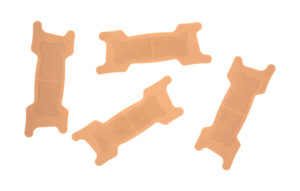It’s estimated that around 40 per cent of the population snores and regardless of the health issues (of which there are many), snoring can play havoc with your relationship.
Snoring is caused by the rattling and vibration of tissues near the airway in the back of the throat. During sleep, the muscles loosen, narrowing the airway, and as we inhale and exhale, the moving air causes the tissue to flutter and make noise like a flag in a breeze.
Some people are more prone to snoring because of the size and shape of the muscle and tissues in their neck. In other cases, excess relaxing of the tissue or narrowing of the airway can lead to snoring and this is preventable/fixable. When you breathe, you push air through your nose, mouth and throat. If the airway is restricted, tissues — including the soft palate (the back of the roof of the mouth), tonsils, adenoids and tongue — vibrate against each other as you force air through.
 . Source: CDC/NIH
. Source: CDC/NIH
Occasional snoring due to a cold or flu is generally harmless. But very loud or frequent snoring can be a sign of sleep apnea, which is a serious disorder. Long-term snoring increases the risk of health problems, including:
- Decreased blood oxygen levels.
- Difficulty concentrating.
- Fatigue (feeling very tired during the day).
- Heart attack.
- High blood pressure.
- Stroke.
- Type 2 diabetes.
If you are worried about the long term effects of snoring, or you are at your wits end with being woken up every hour either to the sound of your own snoring, or being dug in the back and told to “roll over!”; or if you are the long suffering sufferer of a snorer, then read over these tips to stop the snoring in your life.
Snoring Treatment Tip 1 – Diet
Although this probably won’t be the complete snoring treatment answer, it is worth starting with looking at what you’re eating and drinking. You could well have intolerance to certain foods which affects your breathing, especially when lying on your back. For example, too much (or an intolerance to) dairy produce is likely to cause you to become blocked up with mucus, when horizontal, this collects causing heavy breathing and snoring.
It is also important to avoid alcohol and sedatives as they relax the muscles and restrict air flow.

Snoring Treatment Tip 2 – Weight
Being overweight is another significant contributor. Excess weight in the neck and chest puts pressure on the breathing passage.
Being a snorer and being overweight are interchangeably linked. In other words, obesity can cause snoring and snoring can cause obesity. When we’re tired during the day, we generally eat more and so it is self perpetuating.

Snoring Treatment Tip 3 – Sleeping Position
Sleep on your side or front, as this takes the pressure off the back of the throat, enabling a clearer passage. Now this is easier said than done, because it’s hard to control your sleeping position once you are asleep! However, there is an old trick that may be worth considering. You could sow a walnut, table tennis ball or similar size object into the back of a shirt and wear that in bed. Each time you roll on your back it will dig into you, causing you to roll back again.

Snoring Treatment Tip 4 – Nasal Strips
Try nasal strips. They actually work for a lot of people. Nasal strips (often used by athletes) open the air passage for you, thus removing or preventing blockages. If you’re desperate it’s worth a try, but the cost can add up over the days, months and years so may not be a long term solution for everyone.

Snoring Treatment Tip 5 – Raising the Head of Your Bed
Elevating the top part of your bed with risers, a wedge pillow, or an adjustable frame may reduce snoring. For this to work, it’s important to raise the whole mattress and not just use more pillows, again taking the pressure off the back of the throat.

Snoring Treatment Tip 6 – Mouth, Tongue and Throat Exercises
Exercising the muscles in your throat, tongue and doing breathing exercises can completely cure your snoring.
Different studies have used different techniques, but here are five of the key exercises that appear in most experiments and can really make a difference:
- Tongue curlers. With your mouth open, slide the tip of your tongue backwards along your hard palate as far back as it will go. Repeat 20 times.
- With an open mouth, press your tongue flat against the roof of your mouth and suck it upwards. Hold for 2 seconds and repeat 20 times.
- Force the back of your tongue against the floor of your mouth whilst the tip remains in contact with your lower front teeth. Again, you should do this with an open mouth.
- Pull your cheek out with your finger, use your cheek/mouth muscles to pull the finger back in.
- Elevate the back of your throat by sounding “aahh”. Once you get better at this exercise, you should be able to raise your uvula (the dangling part in the back of your throat) without making a sound.
Practice breathing through your nose:
- With your mouth closed and your jaw relaxed, inhale through your nose.
- Then, take a finger or knuckle and close off one nostril.
- Breathe out gently through the open nostril.
- Do this about 10 times while alternating between nostrils.
- You may even notice one nostril tends to be more congested than the other, and choose to work on breathing through the congested nostril.
Purpose: This exercise improves nasal breathing, which stabilises the airway during sleep.
Pronouncing Vowel Sounds:
Saying different vowel sounds involves the muscles in your throat, so deliberately repeating these sounds can help tone those muscles.
Repeat the vowel sounds a-e-i-o-u. Start by saying each normally, and then adjust how much you stretch out the sound or how rapidly you say the vowel. Repeat the same sound 10 or 20 times in a row, and then change to a different sound. You can combine sounds (such as ooo-aaah) and repeat those as well.
Singing:
Singing activates multiple muscles in the mouth and throat and involves pronouncing diverse sounds, including vowels. Preliminary research has found that focused singing training may cut down on snoring. When singing, try to focus on repeating and forcefully pronouncing individual sounds rather than just singing normal lyrics.

Snoring Treatment Tip 7 – Nasal Decongestant.
Cold and allergy medications relieve nasal congestion and help you breathe freely. Obviously talk to the pharmacist about the best solution for you and be aware that this is only a short term solution. A saline spray can be used over a long period of time without any negative side effects. Many people benefit from a saline spray to clear the nostrils and to keep the passages open, enabling easier nose breathing.

In summary:
Your health depends on getting enough sleep. If you or your partner experiences snoring and none of the common solutions help, it could be Obstructive Sleep Apnea (OSA) and a Doctor may recommend a sleep study.
It’s important to know that there are treatments, and you can get your restful nights back.
As a last resort, there are surgical options which your doctor can talk you through.
|
Surgical solutions:
|
Related Articles:
- Top 10 Healthy Tips for Fitness Success:Read more on tips for fitness success
- JERF, Just Eat Real Food: Read more on the importance of eating fresh food.
- Fatigue A Symptom to be Weary of: Read more as to how fatigue can be bad for us.





